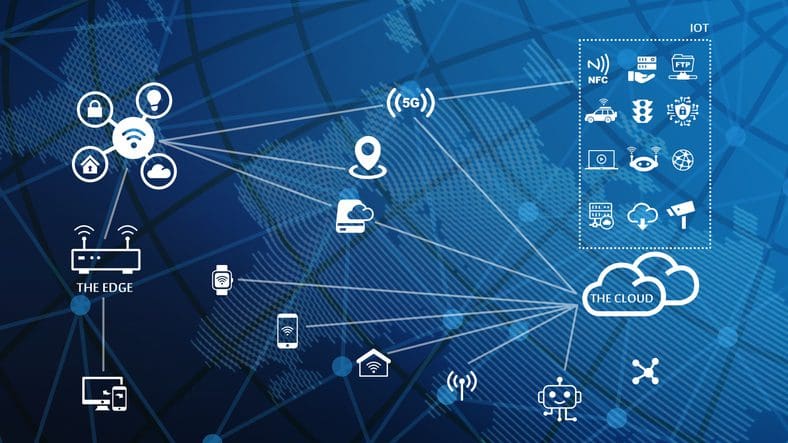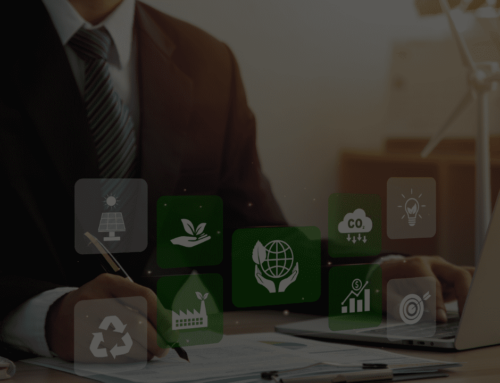June 13, 2022
IoT Remote Monitoring – Guide to Improve Performance
READ TIME: 9.7 MINS
How to Get Started With The Proven Benefits of IoT Remote Monitoring
IoT remote monitoring is designed to help companies transform services and generate greater profits. Companies leverage modern technologies such as AI, machine learning, and big data analytics. Our Industrial Internet of Things (IIoT) platforms, such as ThingWorx, allow our clients to turn their IoT vision into a powerful reality! The ability to scale from the cloud to edge computing is one of the most sought-after transformations for our clients. The most common first step is reducing the cost of service through this service, then companies can also adopt new service delivery processes such as remote service.
What is IoT Remote Monitoring?
IoT remote monitoring is a powerful technology that allows for the remote management and monitoring of devices or systems using Internet of Things (IoT) technology. It provides the ability to track and monitor important parameters such as temperature, pressure, current, voltage, and humidity in near real-time. With just a mobile device or computer, original equipment manufacturers (OEM), service businesses, and individuals can remotely monitor their assets, equipment, and systems from anywhere in the world. This transformative technology finds applications in a wide range of industries, including healthcare, industrial, high tech, and agriculture, making it a vital tool for businesses to optimize their service operations and boost efficiency.
IoT Remote Monitoring Reduces Service Costs
Deloitte finds1 that predictive IoT remote monitoring can increase uptime and availability by 10-20 percent and reduce overall maintenance costs by 5-10 percent!
To achieve that goal, companies need to increase revenue while simultaneously decreasing expenses. One way that we help our clients decrease expenses is through IoT remote monitoring. By tracking data in real time, companies can quickly identify and fix problems before they become expensive issues. For example, if a machine is starting to overheat, the company can shut it down and avoid a costly repair bill. In addition, by analyzing trends over time, companies can prevent potential problems before they happen altogether. This proactive approach helps companies save money on unexpected repairs and downtime.
IoT Remote Monitoring Improves Service Delivery
In the past, if a client needed service on their machinery, a technician would have to travel to their location. This was time-consuming and expensive. With the advent of this technology, technicians can now provide service without ever leaving the office! Through live video streaming and interactive 3D instructions, technicians can see exactly what is going on and provide assistance in real-time. This not only saves money on travel costs but also cuts down on valuable downtime for the client.

The Benefits of IoT Remote Monitoring
The benefits of IoT remote monitoring can be divided into three categories: improved customer service, reduced downtime, and increased efficiency.
Let’s take a closer look at each one:
- Improved Customer Service
- One of the most obvious benefits of IoT remote monitoring is improved customer service. By using sensors to collect data on equipment usage and performance, companies can anticipate problems before they occur.
- This allows them to address issues before they become full-blown problems that need to be fixed on-site.
- Additionally, by collecting data on usage patterns, companies can gain insights into how their products are being used and make necessary adjustments to improve the customer experience.
- Reduced Downtime
- Another major benefit of IoT remote monitoring is reduced downtime. By using sensors to monitor equipment in real time, companies can identify issues early and take steps to fix them before they cause major disruptions.
- By remotely monitoring equipment, companies can often avoid the need for expensive on-site repairs altogether by fixing issues early and saving significant money long term.
- Increased Efficiency
- In addition to improving customer service and reducing downtime, IoT remote monitoring can also increase efficiency.
- By automating tasks such as maintenance alerts and updates, companies can free up employees to focus on more important tasks, allowing companies to eliminate waste and improve overall efficiency
Statista.com conducted a worldwide survey asking industrial organizations which Industry 4.0 technologies (smart technologies) would have the greatest impact on their organization. When asked about the Internet of things, 72% of respondents acknowledged it to be one of the most impactful technologies! Of the same respondents, 68% agreed or acknowledged that Artificial Intelligence (AI) was likely to have a great impact on their organization. This shows just how impactful the Internet of Things can be when properly utilized within a company.
Let’s look at the six steps to deploying a successful IoT remote monitoring solution:
1. Accessing Equipment & Device Data
Identifying Data Sources
The first step in getting started with IoT remote monitoring is identifying which data sources are most important to your business. To do this effectively, you’ll need to understand which data impacts your key performance indicators (KPIs) and thus helps you achieve your long-term service goals. Once you’ve identified the data sources that are most important to your business, you can move on to establishing connections between those data sources and the sensors, devices, or equipment that house them.
Establishing Connections
The next step in getting started with IoT remote monitoring is establishing connections between the data sources you’ve identified and the sensors, devices, or equipment that house them. These connections could include a combination of wired, wireless, cellular, or indirect connections via gateway devices or control systems. Once you’ve established these connections, you can move on to gaining access to the data so you can start monitoring your equipment remotely.
Gaining Access to Data
The final step in getting started with IoT remote monitoring is gaining access to the data so you can start monitoring your equipment remotely. To do this, you’ll need to connect the data sources you’ve identified and the sensors, devices, or equipment that house them. Once you’ve done that, you can start monitoring your equipment remotely by accessing the data through a dashboard or by downloading it for offline analysis.

2. Flexible Connection Strategies
As the world gets more and more connected, it’s important for companies to stay up to date on the latest technologies.
Here are four things to keep in mind when choosing an IoT platform for remote monitoring:
- Out-of-The-Box Connectivity
- A good IoT remote monitoring platform will come with out-of-the-box connectivity that makes it easy to get started.
- Look for a platform that offers support for industrial automation and existing control systems.
- Connection Through Onboard or Companion Computers
- An onboard computer is a great way to manage connections and eliminate the need for a separate computer dedicated solely to monitoring.
- Companion computers are also becoming more popular in industrial applications; small, single-board computers are designed specifically for edge computing and used for tasks like data collection, processing, and storage.
- Ability to Tap Into Existing Control Systems Using APIs
- If you already have a control system in place, look for an IoT remote monitoring platform that offers APIs so you can tap into existing data streams.
- This will help you avoid having to duplicate data collection efforts and reduce the risk of errors.
- Support For Industrial Automation Standards
- As industry standards continue to evolve, it’s important to choose an IoT remote monitoring platform that will be able to adapt.
- Look for a platform that supports popular industrial automation standards like OPC UA, MQTT, and AMQP.

3. Communicate with Devices
For IoT remote monitoring to be successful, devices must be able to communicate with each other and with the central control system.
Flexible, Out-of-The-Box Connectivity
One of the first considerations when choosing an IoT remote monitoring platform is how easy it is to get started. The platform should offer out-of-the-box communication capabilities so that you don’t have to spend valuable time and resources developing your own custom solution. An IoT platform that is difficult to set up and configure is not going to be adopted by users.
Support For a Variety of Protocols
IoT remote monitoring devices come in all shapes and sizes, and they use a variety of protocols to communicate. A good IoT platform will support multiple protocols so that you can connect all your devices, regardless of the protocol they use. Some of the most common protocols used in IoT applications are LoRaWAN, Sigfox, NB-IoT, LTE-M, and Zigbee.
Secure Data Transmission
Security is always a concern when transmitting data over the internet. When choosing an IoT remote monitoring platform, make sure that it offers end-to-end encryption so that your data is secure from beginning to end. In addition, the platform should offer role-based access control so that you can restrict access to sensitive data.
Scalability
IoT applications tend to grow quickly. What starts out as a small pilot project can quickly expand to include hundreds or even thousands of devices. A good IoT platform will be able to scale quickly and easily so that you don’t have to worry about outgrowing your system.
By taking these factors into consideration, you can ensure that your IoT remote monitoring implementation is successful!

4. Leverage The Edge to Pre-Process Data
Companies frequently get overwhelmed by irrelevant information or by receiving too much data. A single piece of equipment can generate vast amounts of data in a short period of time. Companies can benefit from remote monitoring by using AI to filter data. Edge computing can also interpret data by looking for anomalies, out-of-spec situations, consumable thresholds, and other exceptions. This can be used to decrease “noise,” which enables quick identification and action.
IoT Remote Monitoring – Edge Requirements:
Ability to Aggregate Data
Information Filtering
Configurability Without Programming
Pre-Processing
Security
The ability to aggregate data is one of the most important requirements for IoT remote monitoring. This includes the ability to filter information so that only relevant data is sent to the cloud for further analysis. Additionally, configurability without programming is vital for pre-processing data on the edge. Security is also a key requirement, as sensitive data may be transmitted over the network.

5. Use IoT Remote Monitoring to Share Actionable Service Information & Turn Data Into Useful Information
For equipment data to become valuable service intelligence it must be aggregated, contextualized, analyzed, and shared. The benefits of remote equipment monitoring include the ability to integrate other data sources or other information to gain a perspective of equipment service. IoT remote monitoring equipment information shouldn’t be passive. When issues are identified, the platform should be able to launch workflows and run applications.
The 10 IoT Remote Monitoring Visualization Requirements:
- Workflows & Notifications: The platform should be able to launch workflows and run applications when issues are identified.
- Support For a Variety of Protocols: The platform should support a variety of protocols so that you can connect all your devices.
- Predefined Analysis, Anomaly Detection, Trends, and Algorithms: The platform should have predefined analysis, anomaly detection, trends, and algorithms so that you can get started quickly and easily.
- Integration Connectors and Tools: The platform should have integration connectors and tools so that you can connect to other systems.
- Customization Without Coding: The platform should be customizable without coding so that you can make it your own.
- Best Practice Starter Applications: The platform should have best practice starter applications so that you can get started quickly and easily.
- Scalability: The platform should be scalable so that you can grow as your needs change.
- Flexibility: The platform should be flexible so that you can adapt as your needs change.
- Security: The platform should be secure so that you can trust it with your data.
- Usability: The platform should be easy to use so that you can get started quickly and easily.

6. Leverage The Edge to Pre-Process Data
Finding the right IoT remote monitoring platform is only part of the challenge. Companies also need to develop an implementation and adoption plan. The plan should start with a vision of how they’ll improve service performance. Companies should seek outside help from their IoT remote monitoring platform vendor. At TriStar, we’re able to guide customers through training and adoption and offer real-world experience, technical know-how, and system validation.
An Integrated Platform
A best-in-class IoT remote monitoring platform will offer pre-packaged applications that are flexibly configured to work with any data source. It will also come with predefined dashboards, algorithms, adapters, and APIs that speed up development timelines so you can focus on your core business.
TriStar, PLM Solutions: A Partner with Business and Technical Expertise
When looking for a partner, you should consider whether they have experience in your industry vertical as well as the technical expertise needed to support a complex system. At TriStar, we have a team of engineers who are experts in both the business and technical aspects of adopting an IoT remote monitoring solution. We’re also familiar with the challenges and pitfalls associated with implementation and can provide guidance on how to avoid them.
Value of IoT Remote Monitoring
Service organizations face the ongoing challenge of achieving more with fewer resources, while striving to grow the business, reduce costs, and optimize operations. Thankfully, the solution lies in the adoption of IoT technology. With IoT remote monitoring, businesses gain access to valuable insights and actionable intelligence that empower significantly better decision-making.
By leveraging IoT remote monitoring, organizations can realize substantial cost savings over time by reducing parts consumption and field dispatches. Costly repairs, missed service-level agreements (SLAs), and the risk of equipment failure can be effectively mitigated through early detection of potential issues or inefficiencies. For instance, when a piece of equipment malfunctions, IoT remote monitoring promptly alerts service or local personnel, enabling immediate action to swiftly resolve the problem.
The predictive maintenance capabilities of IoT remote monitoring provide businesses with the ability to minimize break-fix calls and regulate the factors that impact resource deployment and business operations. This not only extends the lifespan of equipment but also reduces downtime, elevates customer satisfaction, and boosts net promoter scores. Ultimately, IoT empowers service organizations to achieve more with fewer resources, all while enhancing service levels and customer satisfaction.
Contact us today to learn more about how we can help you adopt an IoT remote monitoring platform!
TriStar Digital Thread Solutions welcomes questions. Feel free to CONTACT US if you can’t find what you’re looking for, or call us at 800-800-1714










Leave A Comment